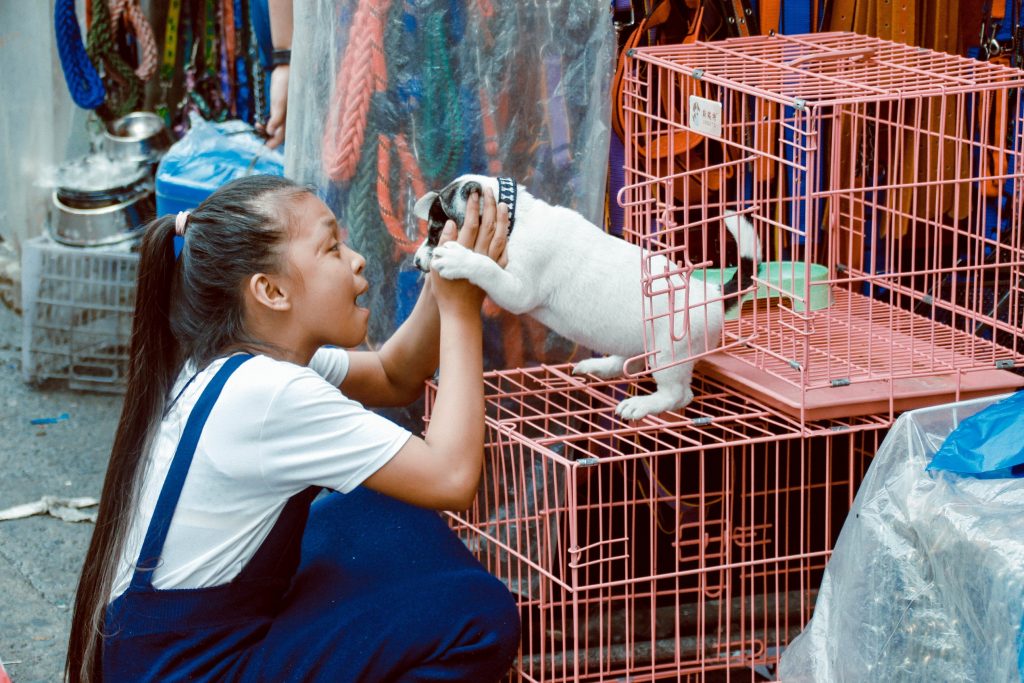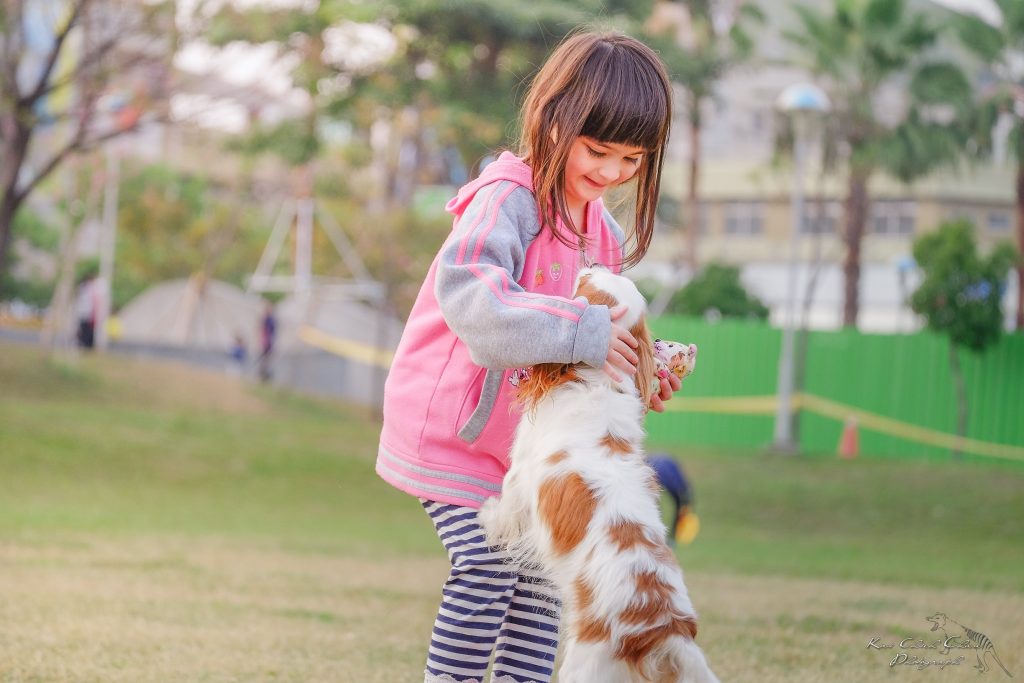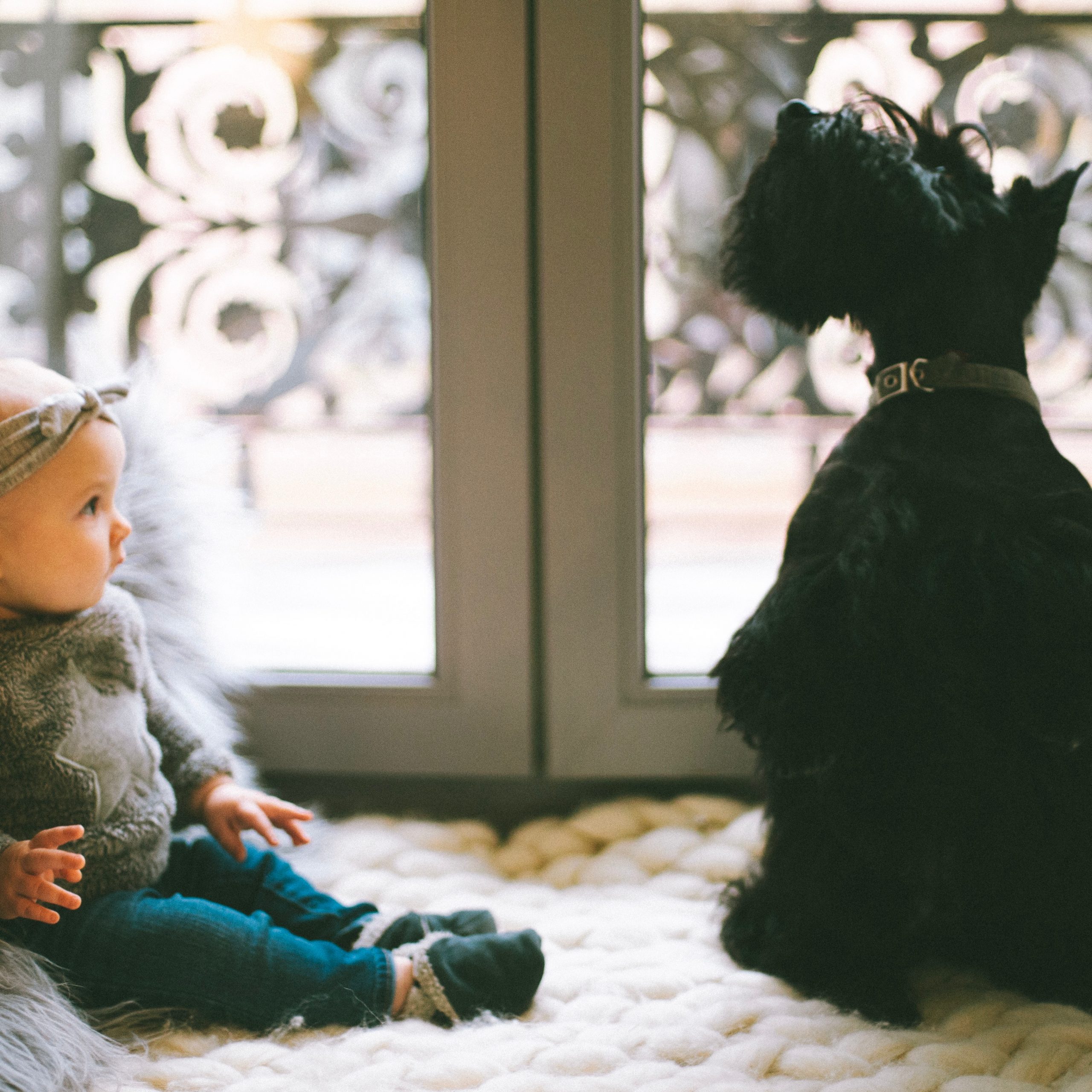Having a pet in the home with children is a great teaching tool, but their interactions aren’t always perfect at first. In fact, both your family’s pet and your child require some guidance and learning. Young children may have trouble understanding how to interact with the family pet. And your pet is learning as well. So read on to learn how to introduce your child to your pet the right way.
1. Start by Showing Your Child How to be Gentle
Young children are learning about their world using all of their senses, including touch. They want to reach for and grab everything in sight. Your family’s pet is particularly inviting because they are so soft and cute. Teaching a child to be gentle to animals takes a little patience, a willing pet, and forgiveness from everyone involved.
When teaching a child to be gentle, put your hand over theirs, and guide the interaction with the pet, saying “gentle” as you go. If the child gets a bit rough, redirect, and try again later. Learning to be gentle takes practice. Always make it a positive interaction for the child and the pet; praise the pet for their patience and praise your child, too.
2. Teach Your Child About Respecting a Pet’s Boundaries

Everyone in the family should honor a pet’s boundaries, children included. Your family’s pet must have an opportunity to eat their food without distraction. Also, they need to rest and relieve themselves in peace. Sometimes, ignoring these boundaries causes a lot of stress for your pets, and the outcome may be devastating.
When boundaries aren’t respected, pets may lash out. You can keep your pets from biting or scratching by teaching children to respect those boundaries. It’s okay to use gates and doors to restrict interactions between your pet and your child. You should always supervise young children around pets.
Showing Your Kids How to Handle Your Family’s Pet

Although having pets with children brings extra considerations, the pay off is worth the cost. Pets teach a child empathy and kindness. For babies, toddlers and young children, your guidance is crucial. Pets also show older children how to be responsible. Children can take on chores associated with the family’s pet, whether it’s the daily feeding and watering or cleaning up after them.
Children and pets can live together. Guiding both pet and child in their interactions create a safe and enriching experience for everyone. So, teach your child to be gentle and respect boundaries with your family’s pet.

















